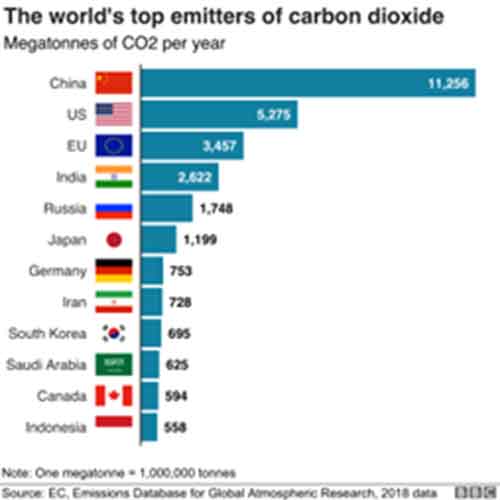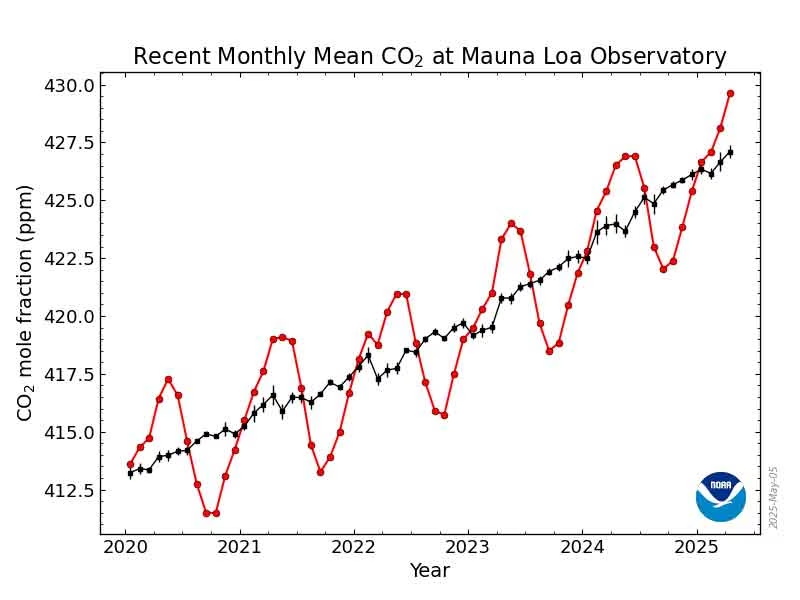
**We do not inherit the earth from our ancestors, we borrow it from our children.**—Native American Proverb
Global warming or Climate Change is real. Current massive storms and hurricanes and flooding in the United States’ Florida, North Carolina and other states and massive flooding and storms in other parts of the world—mother earth—is warning us that unless humanity acts soon to curb the GHG, this beautiful planet of ours will be uninhabitable by the end of this century or long before. The earth and its atmosphere, oceans and rivers are getting polluted and getting warmer and warmer year after year. As per The New York Times—Jan. 10, 2023–last 8 years were the hottest on record. There is no question about it. In its entire history, humanity has never faced a threat of this magnitude ever before. Thousands of scientists around the world have agreed on this. Governments around the world are trying to agree to jointly combat this threat to humanity. But we don’t know if they will succeed.

The World’s Top Three Emitters Contribute 15 Times the Greenhouse Gas Emissions of the Bottom 100
The top three GHG emitters — China, the United States and India — contribute 42.6% total emissions, while the bottom 100 countries only account for only 2.9%.
But it should be noted that while India ranks high among emitters, when you factor in population to look at per capita GHG emissions, the highly populated country ranks significantly lower than the other top 10 emitters. Additionally, India is the only G-20 country that has fulfilled its commitments under the Paris Agreement on environment.
Collectively, this group of nations account for over two-thirds of global GHG emissions. The world cannot successfully fight climate change without significant action by the top 10 emitters.
Unfortunately, the major developed countries who have created this climate crisis are still worried about their GDP growth than about the climate looming climate catastrophe. While these rich nations are responsible for the current climate crisis, the poor nations of Africa and Asia are suffering the most due to this rich-man-created tragedy.
Historically, it is the developed western nations including USA who are responsible for creating the climate crisis in the first place and China accelerated it in last 40 years with its massive development. It is their combined duty to help the developing and poor nations of the world—who are suffering the most as a result of the clime crisis—with billions of dollars to help them fight this climate catastrophe with green energy creating technologies and other means. But do they care?
The Energy Sector is the Biggest Greenhouse Gas Emitter, but Action in Every Sector Counts
Since reporting began in 1990, the energy sector — including generation of electricity and heat, as well as end uses in buildings, transportation, manufacturing and construction — remained the largest contributor to GHG emissions over any other sector, representing 76% of global emissions in 2019.
According to the findings published in the Lancet Journal and reported by The Guardian of UK (October 30, 2017), health of millions of people around the world is being damaged by climate change. Air pollution is causing millions of early deaths every year, with 800,000 deaths annually related solely to coal burning.
Davos-Klosters, Switzerland, 16 January 2024 – A new World Economic Forum report, published earlier this year, warns that by 2050 climate change may cause an additional 14.5 million deaths and $12.5 trillion in economic losses worldwide. Millions of eco-refugees will be forced to encroach on neighboring countries. Despite the stark findings, there is still time for global stakeholders to take decisive, strategic action to counter these forecasts and mitigate the health impacts of climate change globally.
Floods were found to pose the highest acute risk of climate-induced mortality, accounting for 8.5 million deaths by 2050. Droughts, indirectly linked to extreme heat, are the second-highest cause of mortality, with an anticipated 3.2 million deaths. Heat waves take the highest economic toll at an estimated $7.1 trillion by 2050 due to the loss in productivity. Excess deaths attributed to air pollution, caused by fine particulate and ozone pollution are expected to be the largest contributor to premature death with almost 9 million deaths a year.
In a report dated March 1, 2022, from the UN’s Intergovernmental Panel on Climate Change (IPCC), researchers from 67 countries warned that warming is putting a large portion of the world’s biodiversity and ecosystems at risk of extinction, even under relatively conservative estimates. Never before has an IPCC report — considered the gold standard for climate science — revealed in such stark detail how climate change is harming nature.
What ails and affects the wildlife ails and affects us, the authors wrote. Humans are inextricably dependent on many species that are in jeopardy from rising temperatures, whether they’re animals that pollinate crops, filter rivers and streams, or feed us. In the US alone, for example, more than 150 crops depend on pollinators, including nearly all fruits and grains, and climate change puts them at risk.
If the planet warms by 1.5 degrees Celsius — which is almost certain — up to 14 percent of all plants and animals on land will likely face a high risk of extinction, according to the report. The outlook becomes graver if temperatures rise even further; with 3 degrees of warming, for example, up to 29 percent of species on land could face extinction.
Sixth Mass Extinction: Our planet has experienced five previous mass extinction events, the last one occurring 65.5 million years ago which wiped out the dinosaurs from existence. Experts now believe that we’re in the midst of a sixth mass extinction.
Unlike previous extinction events caused by natural phenomena, the sixth mass extinction is caused by us humans. It is driven by human activity, mainly (though not limited to) through the unsustainable land, water and energy use. Currently, 40% of all land has been converted for food production. Agriculture is also responsible for 90% of global deforestation and accounts for 70% of the planet’s freshwater use, devastating the species that inhabit those places by significantly altering their habitats. It’s obvious that where and how the food is produced is one of the biggest human-caused threats to species extinction and our ecosystems. To make matters worse, unsustainable food production and consumption are major contributors to greenhouse gas emissions that are causing atmospheric temperatures to rise, wreaking havoc across the planet. Current climate crisis is causing everything from severe droughts to more frequent and intense storms. It also exacerbates the challenges associated with food production that stress species, while creating conditions that make their habitats inhospitable. Increased droughts and floods have made it very difficult to maintain crops and produce sufficient food in various regions. The intertwined relationships among the food system, climate change, and biodiversity loss are placing immense pressure on our planet.
Global warming has already extinguished local populations of many creatures — roughly half of the 976 species that one researcher studied in 2016. The American pika, for example, has disappeared from a large swath of its former habitat in the Sierra Nevada mountains in California, likely due to climate change, according to a 2017 study. Adapted to cool weather, these small mammals are especially vulnerable to unusually warm weather.

According to the World Wildlife Foundation, (October 9, 2024) -There has been a catastrophic 73% decline in the average size of monitored wildlife populations* in just 50 years (1970-2020), according to World Wildlife Fund‘s (WWF)Living Planet Report 2024. The report warns that parts of our planet are approaching dangerous tipping points driven by the combination of nature loss and climate change which pose grave threats to humanity.
The Living Planet Index, provided by the Zoological Society of London (ZSL), tracks almost 35,000 vertebrate populations of 5,495 species from 1970-2020. The steepest decline is in freshwater populations (85%), followed by terrestrial (69%) and then marine (56%).
Habitat loss and degradation and overharvesting, driven primarily by our global food system are the dominant threats to wildlife populations around the world, followed by invasive species, disease and climate change.
Scientists warn that the world’s largest rain forest is approaching a critical tipping point past which there could be severe, irreversible consequences for the planet.
Amazone Deforestation: New data from Brazil’s National Institute for Space Research–August 24, 2022–shows that of the Amazon—an area five times the size of New York City—were cleared in the first six months of 2022, the highest figure in at least six years. Continued deforestation of the rain forest is contributing to a loss in resilience, or the forest’s ability to recover from droughts, fires, and landslides. If this continues, it could cause the Amazon’s traditionally wet, tropical climate to dry out, a phenomenon known as “dieback.” It’s estimated that between 17 and 20 percent of the Amazon has been destroyed over the past fifty years, and some scientists believe that the tipping point for dieback is between 20 to 25 percent deforestation.

Deforestation in Brazil’s Amazon rainforest slowed by nearly half compared to the year before, according to government satellite data released Wednesday. It’s the largest reduction since 2016, when officials began using the current method of measurement.
In the past 12 months, the Amazon rainforest lost 4,300 square kilometers (1,700 square miles), an area roughly the size of Rhode Island. That’s a nearly 46% decrease compared to the previous period. Brazil’s deforestation surveillance year runs from August 1 to July 30.
International demand for beef –America being the greatest importer–and soy incentivizes ranchers to clear the land for cattle ranching and soybean production. Brazil is currently the world’s top exporter of beef and soy, exporting more than $35 billion worth of those products in 2020.
While global leaders have already agreed on ambitious goals to halt and reverse nature loss (the Global Biodiversity Framework), cap global temperature rise to 1.5ºC (The Paris Agreement), and increase human well-being (the UN Sustainable Development Goals), the Living Planet Report warns that national commitments and, on the ground, action fall far short of what’s required to achieve those goals and avoid dangerous tipping points.
Humans have warmed the planet by an average of 1.1 degrees Celsius (2 degrees Fahrenheit) since the 19th century. While the landmark Paris agreement aims to limit warming to 1.5 to 2 degrees Celsius, global temperatures are on track to grow to between 2 and 3 degrees C by the end of the century.
Despite these stark findings, the new research shows that there is still time for global stakeholders to take decisive, strategic action to counter these forecasts and mitigate the health consequences of climate change. Intensified multistakeholder collaboration, across borders and industries, as well as a comprehensive transformation of the global health system to make it more resilient, adaptable and equitable will be crucial steps to achieve this.
Subscribe to Our Newsletter
Get the latest CounterCurrents updates delivered straight to your inbox.
Every one of us has a duty as a world citizen to help stop the climate change. If not for ourselves, at least for our children and grandchildren. Because if global warming is not contained and stopped within next few years, climate change will be irreversible. Then our children and grandchildren will face terrible consequences from this catastrophe awaiting us. Hundreds of millions will starve, become homeless and many perish.
Chaitanya Davé is an engineer and a businessman. He has authored three books: CRIMES AGAINST HUMANITY: A Shocking Record of US Crimes since 1776-2007, COLLAPSE: Civilization on the Brink-2010, CAPITALISM’S MARCH OF DESTRUCTION: Replacing it with People and Nature-Friendly Economy. Author of many articles on politics, history, and the environment. Founder/President of a non-profit charity foundation helping the poor villagers of India, Nepal, Haiti, USA-homeless and other poor countries. He can be contacted at [email protected].












































